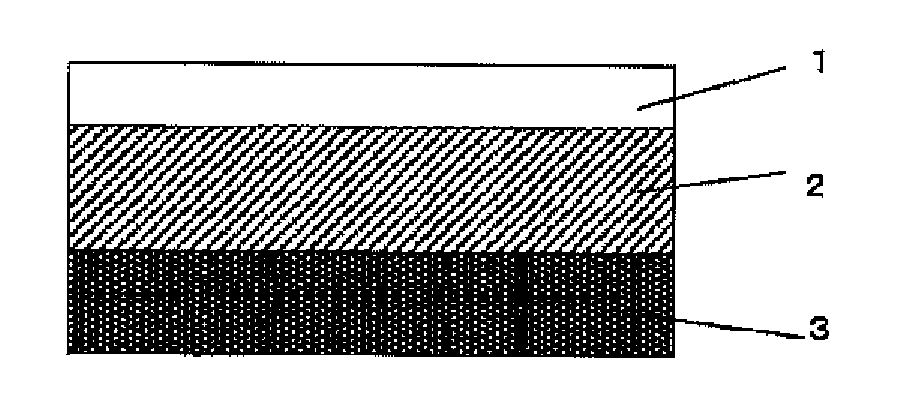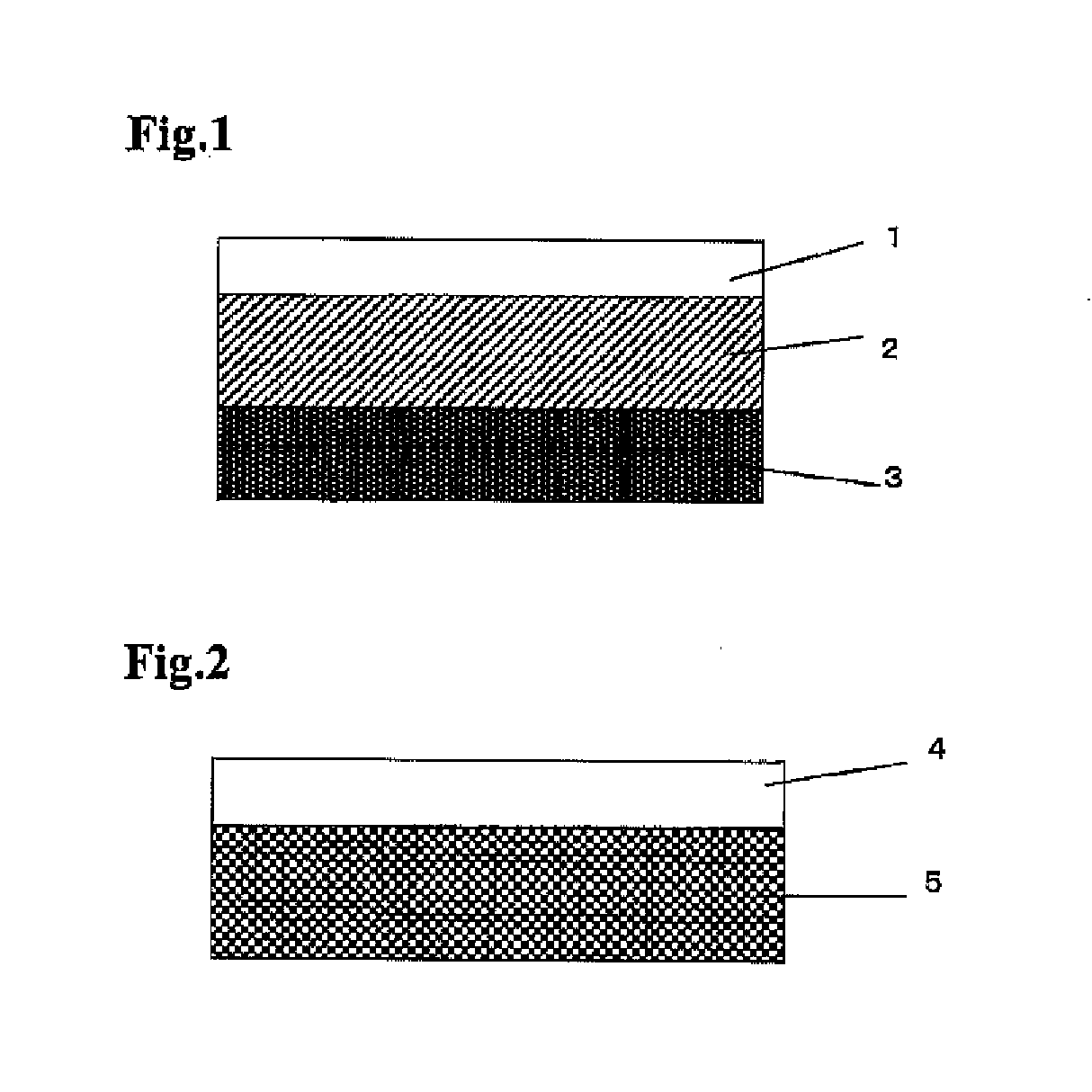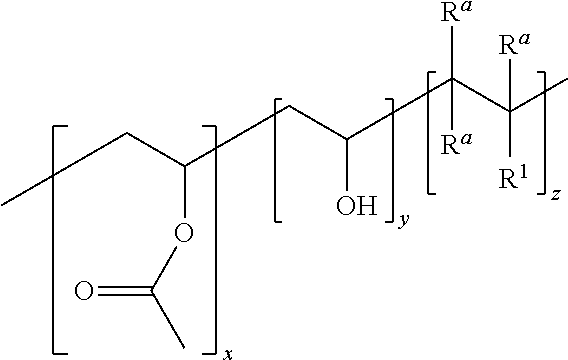Binder for non-aqueous electricity storage element, and non-aqueous electricity storage element
a technology of non-aqueous electricity and binders, which is applied in the directions of cell components, cell component details, transportation and packaging, etc., can solve the problems of thermal runaway, electrical contact between the positive electrode and the negative electrode by tearing the separator, and ensure safety, etc., to achieve excellent adhesion, facilitate water removal, and low water content
- Summary
- Abstract
- Description
- Claims
- Application Information
AI Technical Summary
Benefits of technology
Problems solved by technology
Method used
Image
Examples
example 1
Production of Oxyalkyl Group-Containing Polymer Using Butyl Vinyl Ether as Starting Material
[0191]A 500 mL glass three-necked flask equipped with a stirrer, a thermometer, and a reflux condenser was prepared, and in the three-necked flask, 10 parts by mass of vinyl acetate (manufactured by Kanto Chemical Co., Inc.) and 1 part by mass of butyl vinyl ether (manufactured by Tokyo Chemical Industry Co., Ltd.) as monomers of a copolymer, 0.01 parts by mass of AIBN (reagent name: 2,2′-azobis(isobutyronitrile), manufactured by Wako Pure Chemical Industries, Ltd.) as a thermal radical initiator, and 1.3 mL of methanol as a solvent were placed and stirred at the room temperature for 10 minutes to mix uniformly. Thereafter, the mixture was heated and stirred at 70° C. for 2 hours. The progress of the reaction was checked by tracking vinyl groups (1400 cm−1) using FT-IR. After completion of the reaction, the reaction product was cooled and then dissolved by adding 100 mL of methanol thereto to...
example 2
Production of Oxyalkyl Group-Containing Polymer Using Butyl Allyl Ether as Starting Material
[0196]A 500 mL glass three-necked flask equipped with a stirrer, a thermometer, and a reflux condenser was prepared, and in the three-necked flask, 10 parts by mass of vinyl acetate (manufactured by Kanto Chemical Co., Inc.) and 1 part by mass of butyl allyl ether (manufactured by Tokyo Chemical Industry Co., Ltd.) as monomers of a copolymer, 0.01 parts by mass of AIBN (reagent name: 2,2′-azobis(isobutyronitrile), manufactured by Wako Pure Chemical Industries, Ltd.) as a thermal radical initiator, and 1.3 mL, of methanol as a solvent were placed and stirred at the room temperature for 10 minutes to mix uniformly. Thereafter, the mixture was heated and stirred at 70° C. for 2 hours. The progress of the reaction was checked by tracking allyl groups (1400 cm−1) using FT-IR. After completion of the reaction, the reaction product was cooled and then dissolved by adding 100 mL of methanol thereto t...
example 3
Production of Oxyalkyl Group-Containing Polymer Using 2-Ethylhexyl Vinyl Ether as Starting Material
[0199]A 500 mL glass three-necked flask equipped with a stirrer, a thermometer, and a reflux condenser was prepared, and in the three-necked flask, 10 parts by mass of vinyl acetate (manufactured by Kanto Chemical Co., Inc.) and 1 part by mass of 2-ethylhexyl vinyl ether (manufactured by Tokyo Chemical Industry Co., Ltd.) as monomers of a copolymer, 0.01 parts by mass of AIBN (reagent name: 2,2′-azobis(isobutyronitrile), manufactured by Wako Pure Chemical Industries, Ltd.) as a thermal radical initiator, and 1.3 mL of methanol as a solvent were placed and stirred at the room temperature for 10 minutes to mix uniformly. Thereafter, the mixture was heated and stirred at 70° C. for 2 hours. The progress of the reaction was checked by tracking vinyl groups (1400 cm−1) using FT-IR. After completion of the reaction, the reaction product was cooled and then dissolved by adding 100 mL of metha...
PUM
| Property | Measurement | Unit |
|---|---|---|
| melting point | aaaaa | aaaaa |
| thickness | aaaaa | aaaaa |
| viscosity | aaaaa | aaaaa |
Abstract
Description
Claims
Application Information
 Login to View More
Login to View More - R&D
- Intellectual Property
- Life Sciences
- Materials
- Tech Scout
- Unparalleled Data Quality
- Higher Quality Content
- 60% Fewer Hallucinations
Browse by: Latest US Patents, China's latest patents, Technical Efficacy Thesaurus, Application Domain, Technology Topic, Popular Technical Reports.
© 2025 PatSnap. All rights reserved.Legal|Privacy policy|Modern Slavery Act Transparency Statement|Sitemap|About US| Contact US: help@patsnap.com



